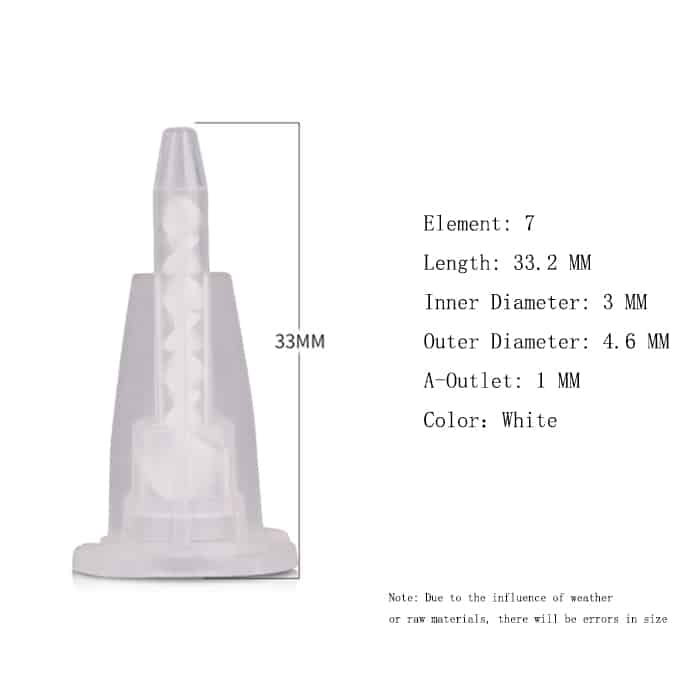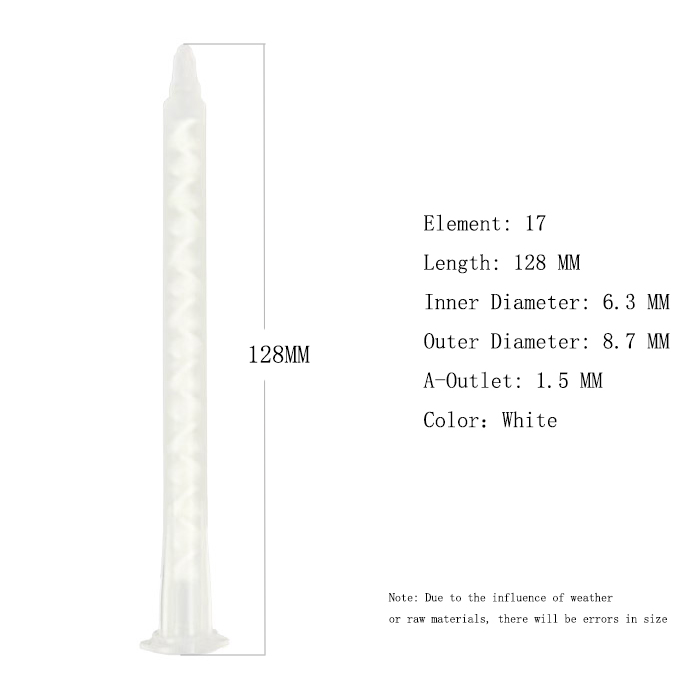Static mixing nozzles are used in various applications where the homogeneous mixing of two or more components is required. These nozzles are often used in the chemical, adhesive, and coating industries. They are available in different sizes and shapes, and the materials used to make them also vary depending on the application. In this article, we will discuss the materials used to make static mixing nozzles.



Polypropylene (PP)
Polypropylene is a widely used material in the manufacture of static mixing nozzles due to its excellent chemical resistance and low cost. It can withstand high temperatures, making it suitable for use with adhesives and coatings that require curing at high temperatures. Additionally, PP is easy to machine, making it an ideal material for manufacturing complex geometries.
Polyethylene (PE)
Polyethylene is another common material used in static mixing nozzles due to its chemical resistance and low cost. It is suitable for use with low to medium viscosity adhesives and coatings. PE is also easy to machine, making it an ideal material for manufacturing complex geometries.
Polyvinyl Chloride (PVC)
Polyvinyl chloride is a thermoplastic material that is commonly used in the manufacture of static mixing nozzles. It is durable, chemical-resistant, and can withstand high temperatures. PVC is also relatively inexpensive, making it a popular choice for manufacturers.
Stainless Steel
Stainless steel is a popular material used in the manufacture of static mixing nozzles because of its high strength and excellent corrosion resistance. It is suitable for use with high viscosity materials and can withstand high pressures and temperatures. Stainless steel is also easy to clean and maintain, making it an ideal material for applications that require frequent cleaning.
Hastelloy
Hastelloy is a high-performance alloy that is commonly used in applications that require high resistance to corrosion and heat. It is an excellent material for static mixing nozzles used in applications that involve highly aggressive chemicals or high-temperature environments. Hastelloy is more expensive than other materials used in static mixing nozzles, but its high-performance properties make it a cost-effective choice for many applications.
Conclusion
In conclusion, the choice of material for static mixing nozzles depends on the specific application requirements. Polypropylene and polyethylene are low-cost materials suitable for low to medium viscosity materials, while stainless steel and Hastelloy are more expensive materials that offer excellent corrosion and heat resistance properties for high-performance applications. Understanding the properties of different materials can help manufacturers choose the right material for their application, ensuring optimal performance and reliability.
